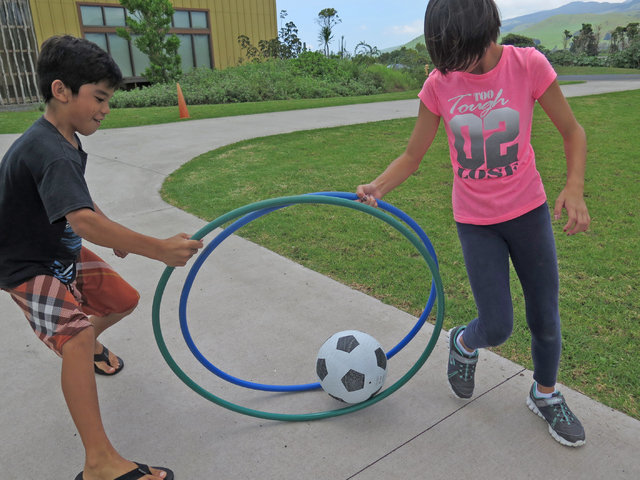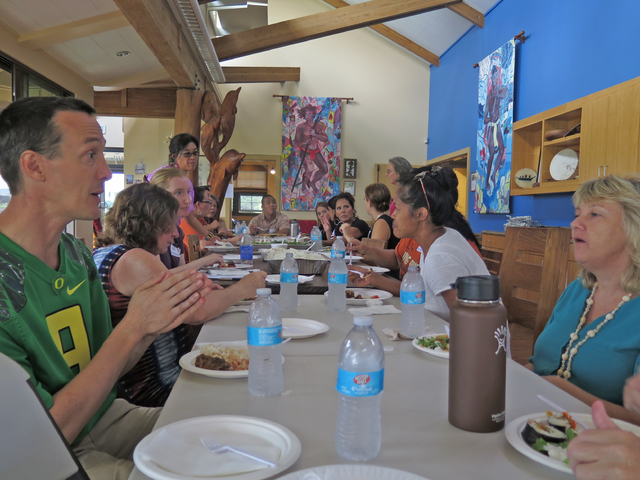Building proactive learning: Learning Disabilities Association of Hawaii supports families
Raising healthy thriving children on Big Island challenges even the most adept decision maker: nutrition, finance, creativity, exercise, community, spirituality, and, of course, formal education all clamor as simultaneous priorities on any given day. Little wonder that a parent might miss a few letters, noticing if a son or daughter spells the word horse for house.
Or picture a public school teacher beleaguered by inadequate resources while striving to support a crowded classroom. How can one professional observe each and every student, assessing whether real mastery for the day’s learning has taken place?
A busy parent, a hectic teacher, an overwhelmed school administrator are just a few key participants who give witness to the symbolic crack, where a student begins to fall and fail — especially for learners processing information differently because of a neurological condition, those students identified as having a “learning disability.“
In response, concerned parents formed the Learning Disability Association of Hawaii in 1968, an advocacy organization that sustains its work on grant funds and helps more 6,800 families statewide navigate the complex process parents face to locate, sustain and advocate for adequate learning resources their child’s needs.
In September, the Learning Disability Association of Hawaii held a traveling miniconference at Kanu O Ka Aina Learning Ohana in Waimea. The event provided an opportunity for families to learn more about resources and services available to help their children with or at risk of disabilities. The event featured a “Kid Zone” that included age-appropriate activities and comprehensive child care for siblings so parents of children with disabilities, students with disabilities and educators could attend informational sessions and workshops.
Michael Detterrera, 10, and Samya Hall, 11, invented a lively soccer game played with hula hoops during the “Building Bridges — Not Walls” conference. The youngsters strolled in when the conference began and as adults engaged in the boring stuff they happily bounced from room to room checking out all the Kid Zone had to offer.
There, they filled bags with shampoo, glitter, and other shiny visuals. Detterrera practiced writing a few letters on the plastic bag, watching intently as the textured letters faded away, experiencing a type of multi-sensory learning organized by the conference.
After a buffet lunch, Hall spontaneously maneuvered a hug for Breanna Fetters, an LDAH parent consultant and conference organizer, who gave each kid a paint set, markers and tote bag. These youth displayed creativity, empathy and discipline; Detterrera attends Honokaa Intermediate School and Hall learns at Konawaena Middle School. And each student has been assessed as learning disabled.
The “Building Bridges — Not Walls” conference presenters shared decades of combined experience on how parents can proactively navigate the Hawaii educational “system.”
Johanna Taylor, board certified behavior analyst, demonstrated innovative strategies to help an autistic child learn. Sue Voight, a mother to two dyslexic children, argued that since learning disabilities are neurological, creative teaching strategies, such as the Multisensory Structured Language can literally “retrain the brain.” Susan Emley from Project Laulima spiked awareness on holistic health and positive responses to parenting stress. And Jensen Tabil shared how technology can play a leading role for learners with disabilities.
Critical to starting the process of identifying a possible learning disability is not overlooking the smallest signal. A failing student rarely bolsters a proactive home where every family member thrives. Early detection, riding on a parent’s instinct to seek help, can now begin at a few months old. The old wait-to-fail model slowly is becoming obsolete for families and schools alike.
However, if the student starts to fail, paramount for building a solid learning foundation, is to not fault home life. Rather than the blame-shame game parents often play on themselves, or school educators, administrators, and nonprofit support groups might be tempted to use as a quick release from the pressure a failing student has placed on them, a team charted plan can start to recognize and change a stymied student.
First, however, parents need to work through the doubt.
“I thought I would be the blame for his condition,” admitted Detterrera’s mother, Janet Detterrera.
Now her son receives learning assistance at his Honokaa school after a psychologist screened him, a process covered by her health insurance.
Rochelle Hall, Samya Hall’s single parent, also initially blamed herself.
“I was in denial at first, but I learned it was not my fault,” she said. Her 11-year-old daughter was screened for Autism Spectrum Disorder, a learning condition that Konawaena Middle School provides support.
Hall advises any parent in doubt or holding off on getting a diagnosis to be proactive and “learn everything you can.”
“Our job is to take those evaluations and empower parents to ask many questions so they become a participating member of the team,” said Fetters, the parent consultant at LDAH, about the process that shifts a parent’s anxious emotions that often follow a positive screening for learning disabilities.
Yet solidifying the team itself becomes complex. From that first phone call a parent makes to the public school, given existing legal mandates in Hawaii education, action must be taken within 60 days. Garnering evidence happens first from myriad sources, including parents, tutors, playground supervisors, doctors and counselors, among others. Anecdotal observation from a parent qualifies, then, depending upon the school’s assessment, a school psychologist, speech pathologist, behavioral specialist, or academic expert might evaluate the child.
What happens next can become very complex given current pedagogy bias, educational law, bureaucratic morass, school specific political culture, and teacher training— all of which becomes known as “the system.” Now picture a parent walking into a conference meeting where all these strands exist, a meeting to decide how best to serve his or her child’s learning needs. This scenario is all too familiar and the reason why parents taking proactive measures to advocate for their student becomes vital, according to LDAH and the conference presenters.
One irony observed by the conference day’s end was that innovative learning strategies succeed in varying applications for all learners. Because of the entrenched American educational history that evidences crippling stigmas and stereotypes for disabled learners, this point becomes critical. Indeed, during one presentation, the younger Hall artfully placed a swift kiss on her mother’s nose as she gently removed her iPhone. Successful, playful youth manipulation was in the works — how inspiring, how ordinary — so that Detterrera and Hall could now play techie games together.
Phone numbers to start the conversation:
Breanna Fetters, Learning Disabilities Association of Hawaii, 536-9684
Alice Bratton and Toni Stylos, Hawaii Learning Resource, 282-2265
Johanna Taylor Phd., Board Certified Behavior Analyst, johannapatriciataylor@gmail.com
Sue Voight, Kumukela Academy of Innovative Learning, 989-5852
Melanie Lee, Hawaii and Pacific Deaf Blind Consortium, 956-5688
Jensen Tabil, Assistive Technology Resource Centers of Hawaii, 532-7114
Project Vision, 282-2265




